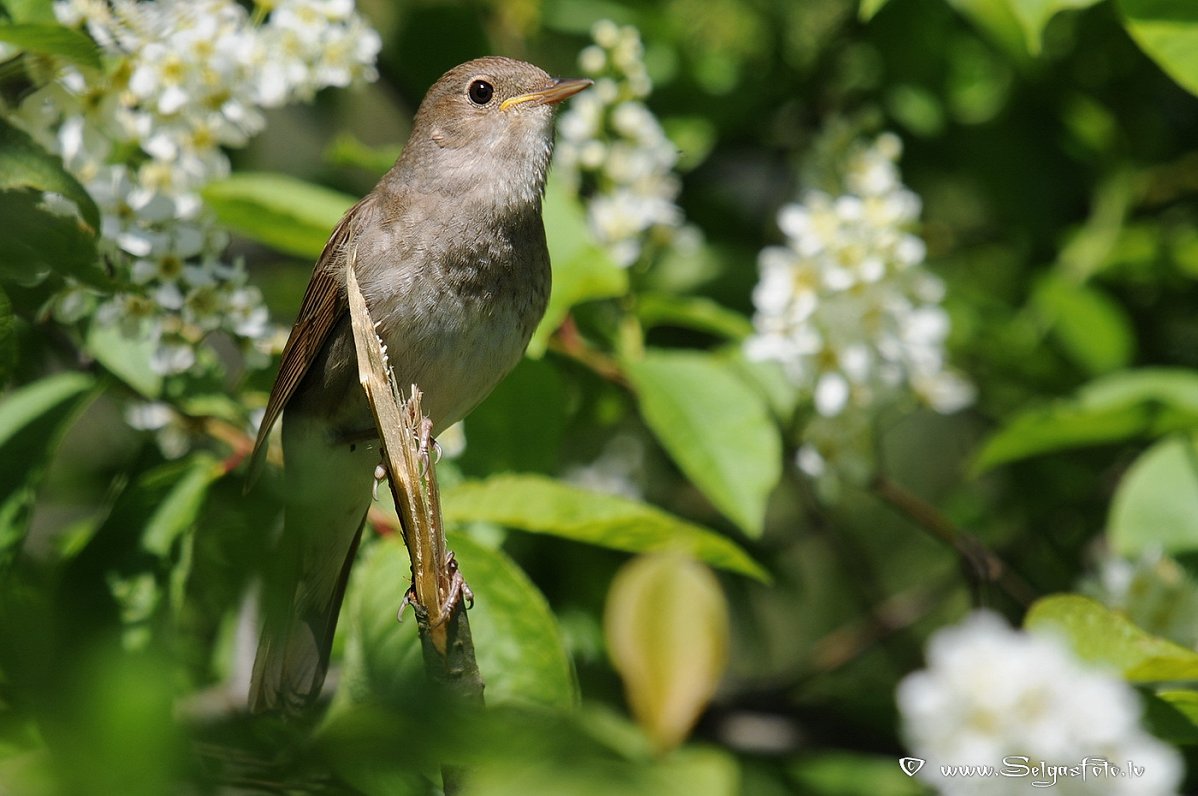Famous as the inspiration for poets and singers, the nightingale is also considered a beloved symbol of Ukraine, and has an important place in the cultural and historical identity of that heroic nation.
"Hearing the nightingale's song in nature in the spring, this year we invite you not only to enjoy the attractive voice of this bird, but also to think about how each of us can support Ukraine and Ukrainians and their efforts for independence," said Andris Dekants of the Latvian Ornithological Society in announcing the nightingale as the bird of the year.
“This is one of the rare times when the Bird of the Year role is a songbird that is not characterized by expressive plumage, but by a bright song. Therefore, we invite residents to not only notice, but also hear the voices of birds in nature and try to recognize them."
The nightingale is a fifteen to seventeen centimeter long, dull grey-brown songbird that nests in thick, moist, shady deciduous forest, often in hazel groves, shrubs and waterside scrub, also in dense gardens and parks. The nightingale, which is a long-distance migratory bird, returns from its wintering grounds in Africa on average on April 30, so the bird's voice can be heard most often in May and June, mostly at night, although it is possible to hear the nightingale also during the day.
The nightingale's song is a series of very loud tongue-clicking and bubbling sounds, with the verses often punctuated by a few pensive, sharp whistles. On quiet nights, the nightingale's trilling can be heard at great distances. Nightingale voice recordings made in Latvia are available here: https://xeno-canto.org/species/Luscinia-luscinia?query=cnt%3A+Latvia.
The nightingale feeds on invertebrates mostly on the ground, so humus-rich soil covered by decaying leaves is essential. Nests, sometimes repeatedly during the season, most often in the same neighborhood, usually on the ground in a well-shaded place in a bowl-shaped nest. A clutch contains four to five grey-blue mottled eggs. As the feeding time of the babies begins, the nightingale's songs stop.
"The results of bird surveys reveal that since 2005 we have lost a quarter of the nightingale population," says associate professor of the University of Latvia, Dr. Ainārs Auniņš .
"One possible reason is climate change. The nightingale has been a classic bird of our region until now. As the climate becomes warmer, the range of the species will probably shrink during this century, so that the nightingale will only be found here during transit – in spring and autumn – and will be replaced by the western nightingale (Luscinia megarhynchos), which currently nests in the rest of Europe. That's why audio recordings are especially important, because they can help to notice the presence of the western nightingale in Latvian nature, since a certain similarity can be heard in the songs of both birds."
In order to help identify the distribution of the nightingale in Latvia, the Latvian Ornithological Society invites you to make audio recordings of birds' voices in May and June and send them to the e-mail [email protected] , specifying the time and location of the recording. Also, the Latvian Ornithological Society invites everyone to report sightings of nightingales on the portal or mobile app Dabasdati.lv, which will provide valuable data for the new Latvian nesting bird atlas.


























